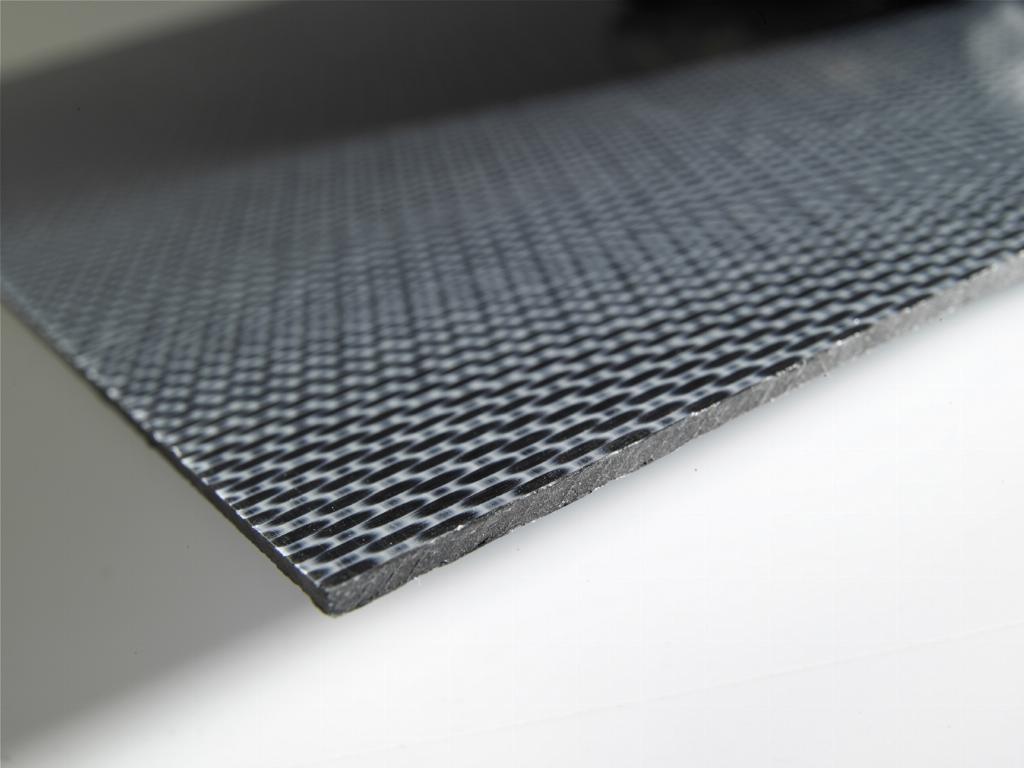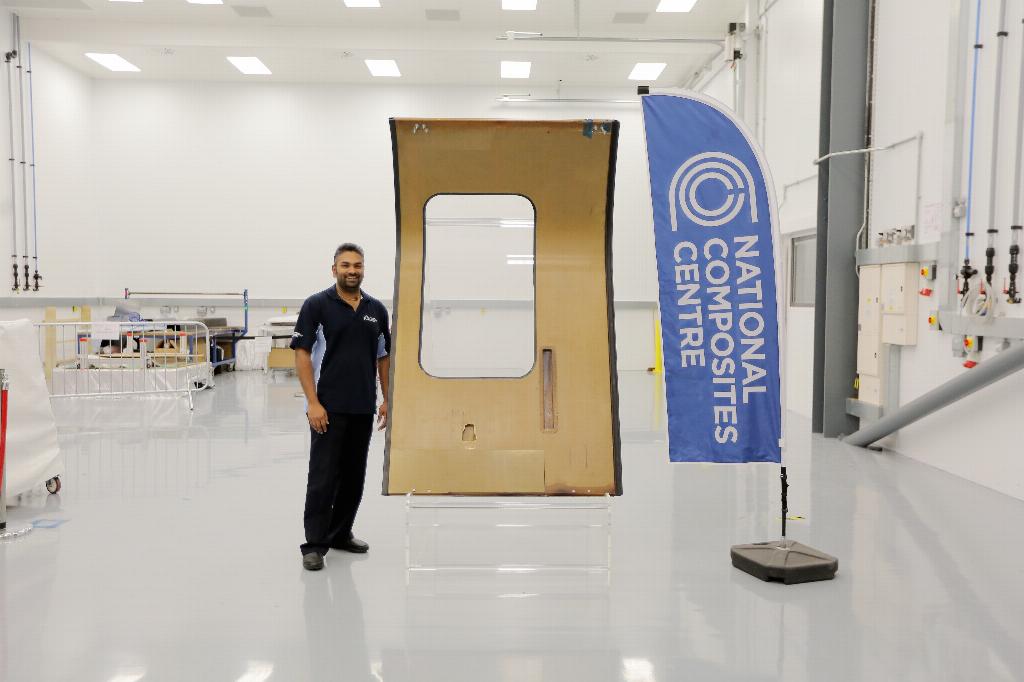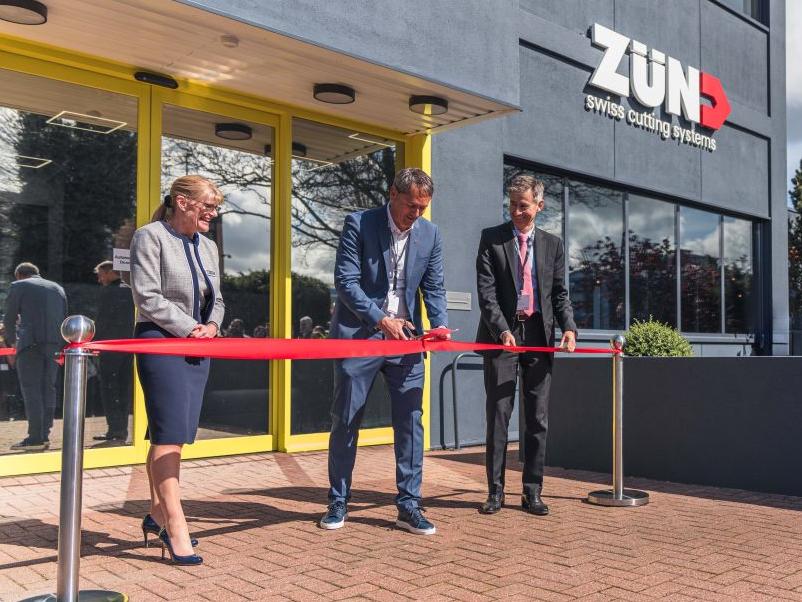The Central question

New thermoplastic composite train doors are currently impressing Transport for London, but is the UK’s supply chain mature enough to meet the potential demand from the rail industry? Adrian Wilson reports.
A time-saving of just 0.7 seconds could make a surprisingly significant difference when it comes to the 260 million passenger journeys that are made each year on London Underground’s Central Line – the busiest and most intensively-used section of railway in the UK.
It’s been calculated that just shaving this fraction of a second from the time it takes for a train’s doors to open and close equates to moving two-and-a-half more trains through each of the 49 stations on the circuit every day.
This adds up to an annual saving of £4.7 million, and it’s just one of a number of benefits that Transport for London (TfL) is realising would arise from the replacement of its current aluminium-fronted train doors with alternatives based on thermoplastic composites.
Sensors working overtime
The first such composite door has been mounted with a range of sensors and is currently being monitored in constant service on a first Central Line train, in order to fully validate the potential savings it can make.
“The lower weight of the doors will achieve faster actuation times, leading to a shorter time between stops and increased capacity due to faster passenger throughput,” says John Darlington, head of product management for Netherlands-headquartered TenCate Advanced Composites. “TfL has calculated that the 25-30% weight savings that are achievable with the new composite doors would mean the trains will be around a ton lighter overall, resulting in lower wear on the tracks. They will also be more durable and corrosion resistant than the currently-used metal and honeycomb core construction.”
TfL has estimated that the net benefit of replacing 12,000 current doors with the composite alternatives would save around £100m over their lifetime, at a cost for replacement of £25m. There are 7,820 train doors on the Central Line alone.
“TfL will be replacing approximately one hundred of these in 2017 and this represents a huge opportunity, but also a challenge to the train builders and the UK’s composites industry supply chain to make it happen,” Darlington adds.
On track for growth
According to Daventry-based Axillium Research, the 2015 market for composites in the UK’s rail industry is worth around £60m and by 2020 will grow to a value of between £80-100m as a result of the maturing market for certain high-volume, low cost semi-structural interior parts such as seats, panelling and interior doors in the retrofitting of rolling stock.
Significant further potential is seen in mid-volume, structural parts for both infrastructure and rolling stock, but here, supply chain maturity and accelerated manufacturing capability are required.
TfL’s first composite door was developed by a consortium including engineering and design consultancy Atkins, rail supplier Wabtec, University College London and the National Composites Centre (NCC).
Atkins was involved in the down-selection of the materials and the structural design and stress analysis of the doors.
“The material choice was driven largely by fire, smoke and toxicity (FST) regulations, resulting in a structure that found a compromise between strength and safety,” explains Atkins chief aerospace engineer, Tim Edwards. “Structural analysis was under-pinned by finite element analysis and Atkins’ composite stress methods.”

Stemming from a TSB-funded project under the ‘Accelerating Innovation in Rail’ funding call, the composite door is based on TenCate’s Cetex thermoplastic composites, which are already widely employed in the aerospace industry, where they are used with aerospace grade PEEK, PPS, PEI and PEKK resins.
PEEK, PPS and PEKK are semi-crystalline in nature which allows them to be resistant to solvents while PEI is exceptionally impact resistant and capable of high temperature service. PEEK, PPS and PEKK materials are utilised in structural applications such as access doors, fuselage clips and brackets, leading edges and flight control surfaces. PEI-based materials are typically found in aircraft interior flooring, galleys and luggage compartments.
Cetex thermoplastic composites are valued for their toughness and impact resistance, while also being resistant to moisture and solvents. Just as important is fire retardancy – Cetex is able to meet and exceed the UK’s most stringent FST regulations which are imposed in the underground environment.
Another key advantage is that since there is no chemical reaction to worry about in thermoplastic composites, Cetex prepregs can be stored at room temperature without any degradation of properties. This eliminates the need for cold storage and cold transportation that can complicate the logistics of using thermoset composites.
“The reason I got involved in the project was that rail is a global market with ever-expanding fleets in major cities, where better vehicles with lower maintenance are required,” says Darlington. “That’s where I really see the potential. There is a long qualification period in such industries but TenCate has the stomach to ride that wave. We know it’s going to take a long time. When we first entered the aerospace industry with Cetex there was a seven-year qualification period and then we had to wait a further two years before the introduction of the first parts. We don’t want to step on the toes of our customers, but what we have done is started developing a supply chain that could provide such parts on the necessary scale and my interest is in helping the suppliers who want to be part of this opportunity. At the moment the UK market is really lacking in such a supply chain, compared to Germany, the Netherlands and France.”

Rail suppliers network
For the introduction of new materials such as composites, Edwards believes it is especially important that the suppliers are well-integrated.
“To develop a product that is fully-compliant with industry regulations requires knowledge of the industry standards, understanding of the necessary testing and structural substantiation requirements and awareness of industry best practice and the prevailing environmental operating conditions,” he explains. “It also requires understanding of the commercial constraints that might pertain to the application. Failure in any one aspect is likely to lead, ultimately, to failure of the product.”
The ability to deliver at a competitive whole-life price is the key to the success of composite materials in the rail industry, adds Edwards.
“First cost is, of course, an important consideration, and composites can be competitive, but it’s probably not the dominant issue in this respect. They can, however, deliver first cost savings through the elimination of painting with pigmented resins and structural and non-structural joints in some large-scale applications. Their ability to resist corrosion and fatigue is an attribute that gives them a clear competitive advantage over metals across the life of a vehicle. The potential to remove weight can also have benefits regarding direct operating costs, and more prosaic aspects of railway operation, such as lifting for maintenance and re-railing following derailment. It is the weight of these perceived whole-life benefits set against that of considerations such as added first cost, or susceptibility to damage, that will determine whether train-operating companies choose to adopt them in their new products.”
There is, however, a further obstacle to the wide-scale adoption of such composites by the UK’s rail industry and TfL is somewhat unique in the UK industry, Darlington explains.
“Other UK train operators don’t own their tracks and are on seven-or-ten year franchises, so longer-term reinvestment is not a priority,” he says. “They don’t have the same long-term vision in respect of line wear nor the same capacity as TfL and as a result the train operators, push upgrading plans right to the back of their schedules. Unless the UK system changes, I don’t see much traction.”

Increasing composites adoption
Nevertheless, both he and Edwards believe that in the longer term, thermoplastic composites will become more widely adopted in many more roles by the rail industry.
“There are a variety of applications, but the probability of adoption is a function of the risk that operators envisage,” says Edwards. “Opportunities exist in three main areas – new products, retrofit and repair. For new products, the application must target the strengths of composite materials rather than adoption being driven for the sake of change. Weight saving, for example, would suggest applications on un-sprung bogie components, as would resistance to fatigue. For retrofit applications, replacement of unreliable metallic components (probably arising from fatigue) presents a low-risk route to composites adoption. Finally, composite materials can be excellent for repair because they can often be applied in situ, avoiding the difficulties of, for example, inert gas welding on aluminium vehicle body-shells.
“Composite materials potentially offer advantages to many rail sectors, in infrastructure as well as rolling stock,” Darlington says in conclusion, “but the through-life cost reduction that composites can bring to installation and maintenance can often only be fully realised through new design solutions, reducing part count and establishing new supply chain models. That’s the challenge to the UK industry.
“If you look at the composite fuselage of a modern plane, there’s no reason why the roof of a train couldn’t be made from exactly the same materials with all the advantages that would bring. Applications in trains could be much more than just seating components and backrests.”







